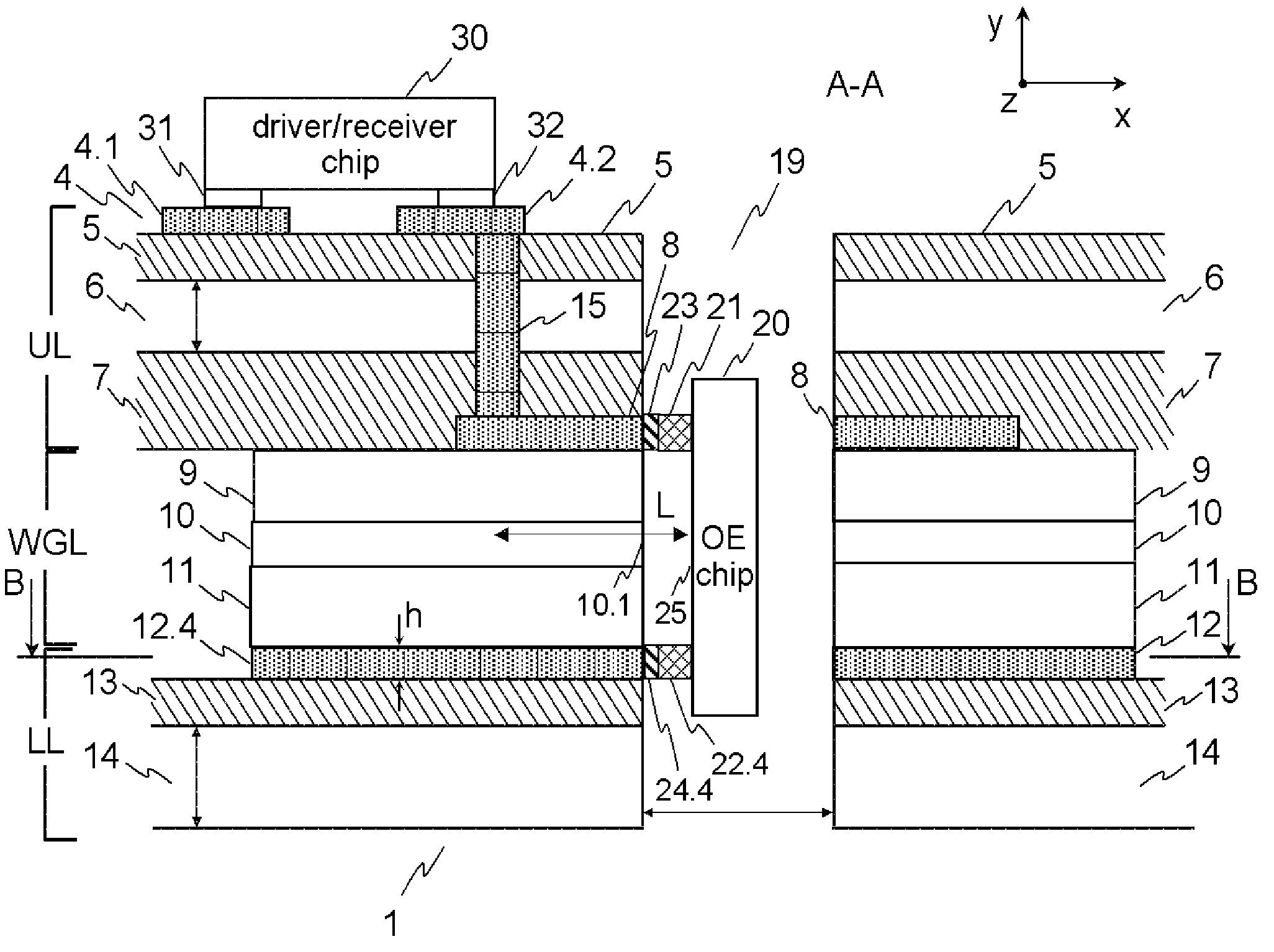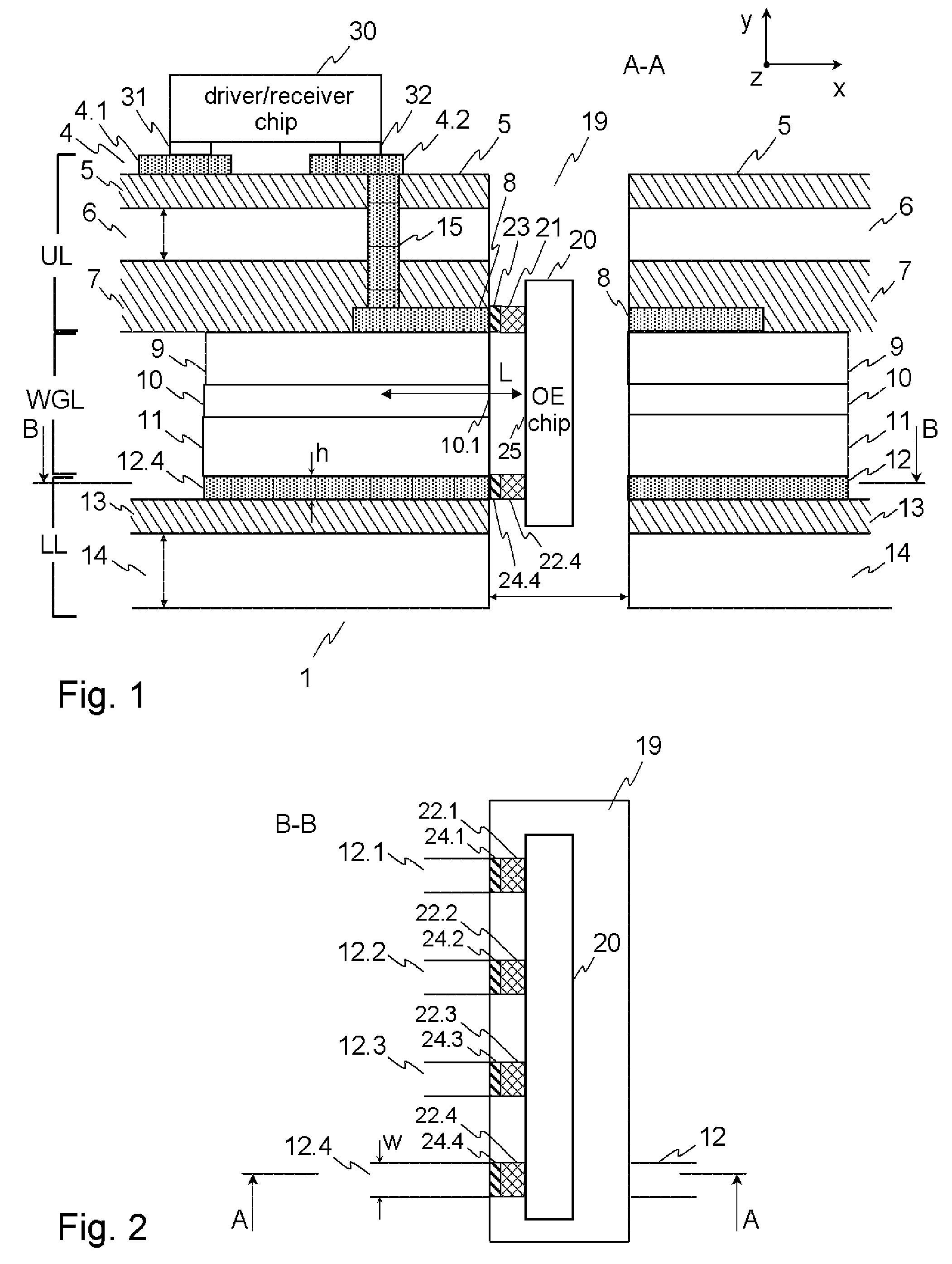Opto-electronic board
a technology of optoelectronic boards and optical components, applied in the direction of optical elements, circuit optical details, instruments, etc., can solve the problems of increasing the cost of optical boards, increasing the resistance of copper wiring of pwbs, and becoming increasingly difficult to achieve electrically, so as to achieve efficient coupling in and out of waveguides and mechanically better positions
- Summary
- Abstract
- Description
- Claims
- Application Information
AI Technical Summary
Benefits of technology
Problems solved by technology
Method used
Image
Examples
Embodiment Construction
[0027]FIG. 1 illustrates a first embodiment of the opto-electronic board with a printed wiring board 1 in cross section. The intersection runs along the intersecting line A-A which is depicted in FIG. 2. FIG. 2 illustrates a clipper of the opto-electronic board 1 in longitudinal section along the intersecting line B-B which is depicted in FIG. 1.
[0028]The printed wiring board 1 is equipped with two chips. One of the two chips is a driver / receiver chip 30 which is mounted on top of the printed wiring board 1. The driver / receiver chip 30 has bonding pads soldered to wiring tracks of the printed wiring board 1. In FIG. 1 two of the bonding pads, indicated with the reference signs 31 and 32, are depicted. The second chip is an opto-electrical circuit 20, which is mounted in a hole 19 of the printed wiring board 1. The expressions opto-electrical circuit, opto-electrical (O / E) converter chip, electro-optical (E / O) converter chip, or shortly converter chip are used in the following as syn...
PUM
 Login to View More
Login to View More Abstract
Description
Claims
Application Information
 Login to View More
Login to View More - R&D
- Intellectual Property
- Life Sciences
- Materials
- Tech Scout
- Unparalleled Data Quality
- Higher Quality Content
- 60% Fewer Hallucinations
Browse by: Latest US Patents, China's latest patents, Technical Efficacy Thesaurus, Application Domain, Technology Topic, Popular Technical Reports.
© 2025 PatSnap. All rights reserved.Legal|Privacy policy|Modern Slavery Act Transparency Statement|Sitemap|About US| Contact US: help@patsnap.com



